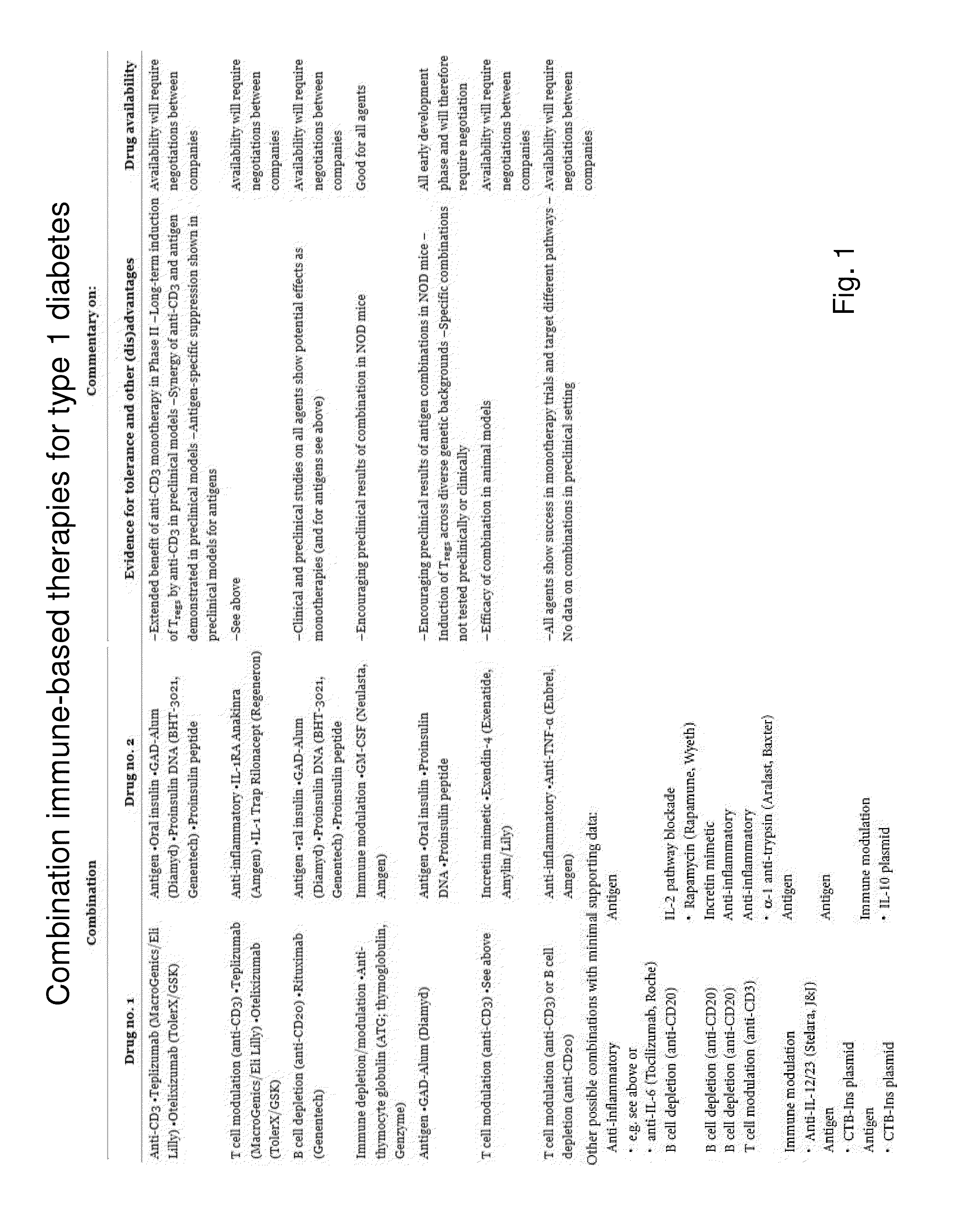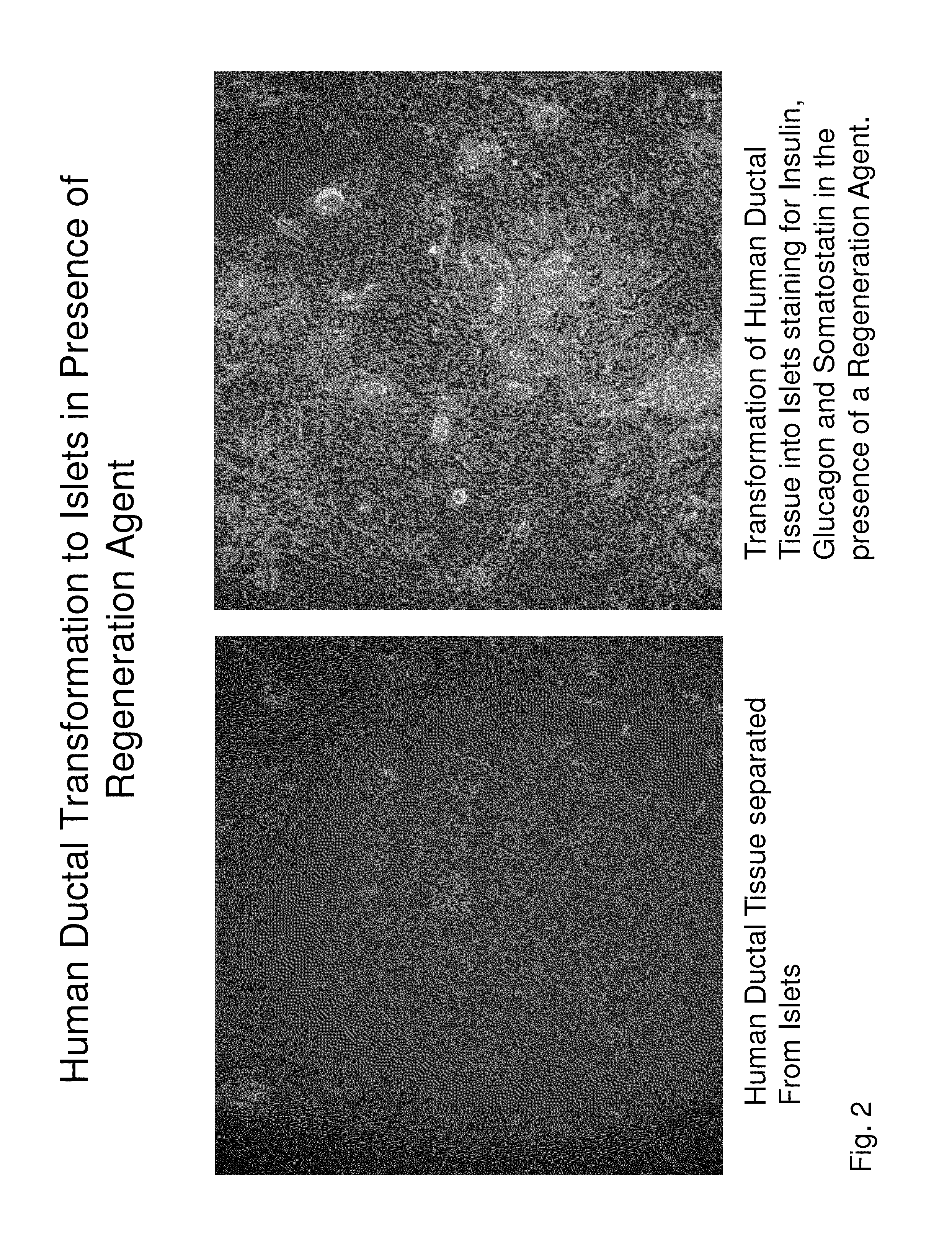Insulin independence among patients with diabetes utilizing a ppi in combination with an immune tolerance agent
a technology of immune tolerance agent and insulin, which is applied in the direction of biocide, peptide/protein ingredient, antibody medical ingredients, etc., can solve the problems that the agent has never been used in clinical trials for type 1 and has never been proposed or utilized. achieve the effect of increasing gastrin levels and increasing ppi
- Summary
- Abstract
- Description
- Claims
- Application Information
AI Technical Summary
Benefits of technology
Problems solved by technology
Method used
Image
Examples
example 1
The PPI Lansoprazole Used with Cyclosporine for Insulin Independence Among Type 1 Diabetes Patients
[0165]The combination of an immune tolerance agent (e.g. Cyclosporine initially dosed at 7.5 mg / kg / day in divided dosages at breakfast and dinner and based on peak and trough levels, the dosage will be modified to optimize immune tolerance and limit side effects) with Lansoprazole dosed at 30 mg per day given in two divided (15 mg per dosage) for children less than 11 years old weighing 66 pounds or less. For children older than 11 years and weighing more than 66 pounds Lansoprozole, will be dosed as 60 mg per day given in two divided dosage of 30 mg each and may be delivered in one capsule / pill or in one suspension per dosage to results in insulin independence. For adults, Lansoprazole will be given as 60 mg twice daily by mouth in pill or oral suspension. Exogenous insulin dosages, whether by injection or pump, are decreased and able to be tapered off based upon glucose levels before...
example 2
The PPI Lansoprazole Used for Insulin Independence Among Type 2 Diabetes
[0166]Thirty milligrams of Lansoprazole per day given will be given in two divided (15 mg per dosage) for children less than 11 years old weighing 66 pounds or less, and for children older than 11 years and weighing more than 66 pounds, Lansoprozole will be dosed as 60 mg per day given in two divided dosage of 30 mg each and may be delivered in one capsule / pill or in one suspension per dosage to results in insulin independence. For adults, Lansoprazole will be given as 60 mg twice daily by mouth in pill or oral suspension resulting in insulin independence. Exogenous insulin dosages, whether by injection or pump are decreased based on glucose levels before meals and fasting. Exogenous insulin dosages, whether by injection or pump, are decreased and able to be tapered off based upon glucose levels before meals and fasting. Modifications made in lowering insulin, will be made based on whether the patient demonstrat...
example 3
The PPI Lansoprazole Used for Reducing Diabetes Medications Requirements Among Type 2 Diabetes
[0168]Lansoprazole will be dosed at 30 mg per day given in two divided (15 mg per dosage) for children less than 11 years old weighing 66 pounds or less, and for children older than 11 years and weighing more than 66 pounds Lansoprozole will be dosed as 60 mg per day given in two divided dosage of 30 mg each and may be delivered in one capsule / pill or in one suspension per dosage to results in insulin independence. For adults, Lansoprazole will be given as 60 mg twice daily by mouth in pill or oral suspension. Lansoprazole given in divided dosages in one capsule / pill or in on oral suspension may result in the need to diminish dosages of other diabetes medications utilized and such medications may potentially be tapered off. Medications include: sulfonylureas, metformin, meglitinides, GLP-1 receptor analogs, DPP-4 inhibitors, thiazolidinediones, SGLT2 inhibitors, anti-inflammatory agents and...
PUM
 Login to View More
Login to View More Abstract
Description
Claims
Application Information
 Login to View More
Login to View More - R&D
- Intellectual Property
- Life Sciences
- Materials
- Tech Scout
- Unparalleled Data Quality
- Higher Quality Content
- 60% Fewer Hallucinations
Browse by: Latest US Patents, China's latest patents, Technical Efficacy Thesaurus, Application Domain, Technology Topic, Popular Technical Reports.
© 2025 PatSnap. All rights reserved.Legal|Privacy policy|Modern Slavery Act Transparency Statement|Sitemap|About US| Contact US: help@patsnap.com



